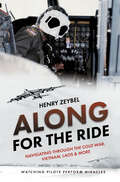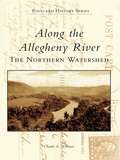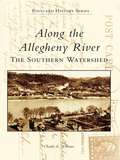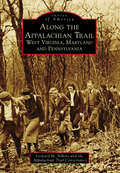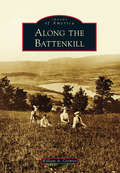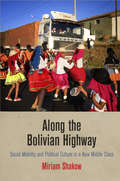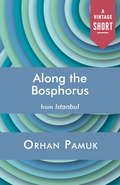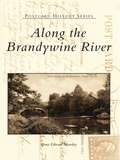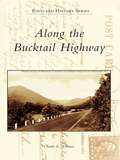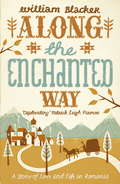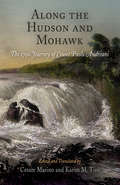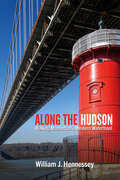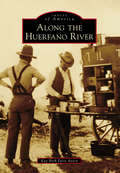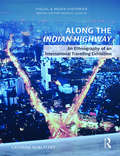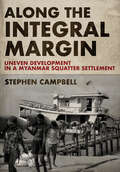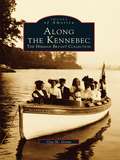- Table View
- List View
Along for the Ride: Navigating Through the Cold War, Vietnam, Laos & More
by Henry ZeybelDuring Hank Zeybel's first tour in Vietnam he flew 772 C130 sorties as a navigator. He volunteered for a second tour, requesting assignment to B26s so he could "shoot back." When B26s were removed from the inventory, he accepted a Spectre gunship crew slot, flying truck-busting missions over the Ho Chi Minh Trail. He describes the terror of flying through heavy AA fire over the trail, and the heroics of the pilots in bringing their crews through. Away from the war he recalls leave back in the US, his elderly father bewildered by his war-hardened attitude and black sense of humor. Contextualizing his time with Spectre gunships, he compares his experiences with those of other airmen, like Phil Combies and Robin Olds, and his broader Air Force career—he joined upon graduating university in 1955 and his first operational assignment was as a B47 Stratojet navigator-bomber at Strategic Air Command—trained to drop thermonuclear bombs with precision. From 1957 to 1963, he logged over two thousand hours as a radar-bombardier in B47 Stratojets and B52 C-models. In this memoir of Vietnam, his Air Force career, and his second career as a journalist and writer, Zeybel's admiration of the skill and bravery of pilots—many of whom who he depended on for his very survival—shines through his descriptions of combat missions and being "along for the ride."
Along the 21st Century Silk Road
by Jeanette LeardiIt was a 7,000-mile overland route heavily traveled by merchants, soldiers, and religious pilgrims during centuries past. Its name derives from the precious commodity carried along its network of paths and roads. Today, a project is under way to replace it with a highway system. What will a 21st-Century Silk Road mean to the people who live there now? Read this book to find out.
Along the Allegheny River: The Northern Watershed
by Charles E. WilliamsThe Allegheny River, of western Pennsylvania and New York, flows through a region rich in natural resources and human history. While the river is 320 miles long, the northern watershed district originates in Potter County, Pennsylvania, and joins the Clarion River near Parker, Pennsylvania. Along the Allegheny River: The NorthernWatershed showcases over 200 vintage postcards of the river, its landscape, and its people. These captivating images chronicle over 200 years of history, from the French and Indian War to the timber and oil booms of the late 19th and early 20th centuries.
Along the Allegheny River: The Southern Watershed
by Charles E. WilliamsThe Allegheny River of western Pennsylvania and New York rises in Potter County, Pennsylvania, and flows 320 miles to its confluence with the Monongahela River in Pittsburgh. The Allegheny's southern watershed district begins in East Brady, Pennsylvania, and ends in Pittsburgh, and it includes the historic Redbank Creek, Mahoning Creek, Crooked Creek, and Kiskiminetas River valleys. Along the Allegheny River: The Southern Watershed features over 200 vintage postcards of the landscapes, people, industries, and events that shaped the history of the southern Allegheny River Valley and of the nation. These absorbing images chronicle over 200 years of history from the frontier wars of the 18th century to the rise and growth ofthe Industrial Revolution in the late 19th and early 20th centuries.
Along the Appalachian Trail: New Jersey, New York and Connecticut
by Leonard M. Adkins Appalachian Trail ConservancyCrossing through 14 states from Maine to Georgia, the Appalachian Trail enters New Jersey through the Delaware Water Gap, crosses New York's Hudson River, and rises over Connecticut's Lion's Head. The area is considered by some to be the pathway's birthplace, for in 1923, just two years after Benton MacKaye originally proposed the trail, the first few miles specifically constructed for the Appalachian Trail were built by volunteers in New York's Harriman and Bear Mountain State Parks. These photographs and the corresponding narrative present a historical perspective on what it took to create the trail, including the thousands of volunteers and the arduous tasks they performed, those who lived along the trail before and during its creation, the many people who have enjoyed the trail through the years, and the original routes that are no longer part of the present-day Appalachian Trail.
Along the Appalachian Trail: West Virginia, Maryland, and Pennsylvania
by Leonard M. Adkins Appalachian Trail ConservancyUnlike counterparts on other sections of the 2,180-plus-mile Appalachian Trail who could locate the pathway within national parks and forests, builders of the 270 miles of trail detailed in Along the Appalachian Trail: West Virginia, Maryland, and Pennsylvania did not have vast tracts of federal lands on which to construct the footpath. Yet they succeeded in creating a trail within many of the states' scenic areas. Hundreds of vintage photographs--provided by the Appalachian Trail Conservancy, National Park Service, state archives, and local trail-maintaining clubs--present an illustrated narrative of the Herculean work and dedication it took for volunteers to plan, build, and continue to maintain the trail in these states. Included are the glimpses of American history the trail passes by, the pathway's early (and later) supporters and hikers, and original locations that have been rerouted off of today's trail.
Along the Archival Grain: Epistemic Anxieties and Colonial Common Sense
by Ann Laura StolerAlong the Archival Grain offers a unique methodological and analytic opening to the affective registers of imperial governance and the political content of archival forms. In a series of nuanced mediations on the nature of colonial documents from the nineteenth-century Netherlands Indies, Ann Laura Stoler identifies the social epistemologies that guided perception and practice, revealing the problematic racial ontologies of that confused epistemic space. Navigating familiar and extraordinary paths through the lettered lives of those who ruled, she seizes on moments when common sense failed and prevailing categories no longer seemed to work. She asks not what colonial agents knew, but what happened when what they thought they knew they found they did not. Rejecting the notion that archival labor be approached as an extractive enterprise, Stoler sets her sights on archival production as a consequential act of governance, as a field of force with violent effect, and not least as a vivid space to do ethnography.
Along the Baltimore & Ohio Railroad: From Cumberland to Uniontown (Images of America)
by Marci Lynn McguinnessDuring the turn of the century, the railroad was anextremely important transportation and shipping resource to thousands of people and businesses inPennsylvania. Along the Baltimore & Ohio Railroad:From Cumberland to Uniontown dedicates its pages to this mass transportation provider. This book includes images from every B&O bridge and station from Cumberland, Maryland, to Uniontown, Pennsylvania, in 1891. Many of the towns stretched along the miles of tracks, such as Somerfield and Ohiopyle, are depicted in these vintage photographs. Experience the coal and coke booms of the 1880s to 1920s through people from many different locations who had one thing in common: the railroad.
Along the Battenkill (Images of America)
by William A. CormierThe Battenkill Valley, in the southern part of Washington County, is the historical backdrop to many homesteading settlers as well as the Mohawk and Mahican tribes. Two retired Roger's Rangers, James Turner and Joshua Conkey, came to Salem and purchased 25,000 acres of land--known as the Turner Patent--bringing many families from Pelham, Massachusetts, to settle along White Creek and the Battenkill. With the advent of photography, the results of this pioneering spirit were captured, first on glass negative plates and later with roll film, by numerous Salem photographers from 1865 to the early 1900s. As new canals, roads, and railroads of the 1800s were built, local photographers could travel easily with their heavy photography equipment, capturing scenes of the towns and villages nestled in the Adirondack Mountains, replete with their own rivers and lakes. Now, the region thrives off agriculture, logging, mining, and tourism. The Battenkill draws hundreds of fishermen, boaters, and swimmers to the area in the spring and summer.
Along the Bolivian Highway: Social Mobility and Political Culture in a New Middle Class (Contemporary Ethnography)
by Miriam ShakowAlong the Bolivian Highway traces the emergence of a new middle class in Bolivia, a society commonly portrayed as the site of struggle between a superwealthy white minority and a destitute indigenous majority. Miriam Shakow shows how Bolivian middle classes have deeply shaped politics and social life. While national political leaders like Evo Morales have proclaimed a new era of indigenous power and state-led capitalism in place of racial exclusion and neoliberal free trade, Bolivians of indigenous descent who aspire to upward mobility have debated whether to try to rise within their country's longstanding hierarchies of race and class or to break down those hierarchies. The ascent of indigenous politics, and a boom in coca and cocaine production beginning in the 1970s, have created dilemmas for "middling" Bolivians who do not fit the prevailing social binaries of white elite and indigenous poor. In their family relationships, political activism, and community life, the new middle class confronted competing moral imperatives.Focusing on social and political struggles that hinged on class and racial status in a provincial boomtown in central Bolivia, Shakow recounts the experiences of first-generation teachers, agronomists, lawyers, and prosperous merchants. They puzzled over whom to marry, how to claim public interest in the face of accusations of selfishness, and whether to seek political patronage jobs amid high unemployment. By linking the intimate politics within families to regional and national power struggles, Along the Bolivian Highway sheds light on what it means to be middle class in the global south.
Along the Bosphorus (A Vintage Short)
by Orhan PamukA Vintage Shorts Travel Selection The Nobel Prize-winning novelist Orhan Pamuk reminisces on growing up on the banks of the mysterious Bosphorus in Istanbul. From the ghostly yalis, splendid waterside mansions built by the great Ottoman families during the eighteenth and nineteenth centuries, to the crowds of vessels--Russian frigates, rickety fishing boats, and ferries--that plied its waters, Pamuk takes readers on a tour of the great river. A selection from the shimmering and evocative Istanbul: Memories and the City, "Along the Bosphorus" is the essential guide to the city's watery way. An eBook short.
Along the Brandywine River
by Bruce Edward MowdayThis fascinating new history of the historical river that winds through Chester County, Pennsylvania, and the upper regions of Delaware and emptying into the Christina River in Wilmington, Delaware, showcases more than two hundred of the best vintage postcards available. The collected postcards show the countryside as it appeared during the Revolutionary War Battle at Brandywine through the time of nineteenth-century settlements in the region and into the twentieth century.
Along the Bucktail Highway
by Charles E. WilliamsThe Bucktail Highway, Pennsylvania Route 120, traverses over 100 miles of the commonwealth's historic northern tier, linking Ridgway in the west with Lock Haven in the east. The Bucktail Highway crosses the eastern continental divide east of St. Marys and closely follows the picturesque, deep valleys carved by Sinnemahoning Creek and the West Branch of the Susquehanna River. Originally a Native American path and later a road that carried settlers west beyond the Allegheny Front, today's Bucktail Highway is a centerpiece of the Pennsylvania Wilds, a public-private initiative to promote and conserve the unique natural and historic resources of the region. Along the Bucktail Highway showcases over 200 vintage postcards profiling the cultural and natural history of the towns, forests, and waters linked by this scenic route from its beginnings as a westward trail, its growth as a commercial and industrial corridor in the late 1800s and early 1900s, and its recent emergence as a premier Pennsylvania scenic byway.
Along the Delaware River
by Richard C. Albert Carrie E. AlbertThe Delaware River has been home to steamboats and canoes, swimmers and fishermen, and shipyards and factories for generations. Recreation and industry have long coexisted along its changing banks. Along the Delaware River presents the Delaware River corridor-from Hancock, New York, in the Catskill Mountains, to the mouth of the Delaware Bay-at the beginning of the twentieth century. Postcards, many nearly a hundred years old, are used to show a river system that both resembles and differs greatly from the one we know today.
Along the Enchanted Way: A Story of Love and Life in Romania
by William BlackerWhen William Blacker first crossed the snow-bound passes of northern Romania, he stumbled upon an almost medieval world.There, for many years he lived side by side with the country people, a life ruled by the slow cycle of the seasons, far away from the frantic rush of the modern world. In spring as the pear trees blossomed he ploughed with horses, in summer he scythed the hay meadows and in the freezing winters gathered wood by sleigh from the forest. From sheepfolds harried by wolves, to courting expeditions in the snow, he experienced the traditional way of life to the full, and became accepted into a community who treated him as one of their own. But Blacker was also intrigued by the Gypsies, those dark, foot-loose strangers of spell-binding allure who he saw passing through the village. Locals warned him to stay clear but he fell in love and there followed a bitter struggle.Change is now coming to rural Romania, and William Blacker's adventures will soon be part of its history. From his early carefree days tramping the hills of Transylvania, to the book's poignant ending, Along the Enchanted Way transports us back to a magical country world most of us thought had vanished long ago.
Along the Enchanted Way: A Story of Love and Life in Romania
by William BlackerWhen William Blacker first crossed the snow-bound passes of northern Romania, he stumbled upon an almost medieval world.There, for many years he lived side by side with the country people, a life ruled by the slow cycle of the seasons, far away from the frantic rush of the modern world. In spring as the pear trees blossomed he ploughed with horses, in summer he scythed the hay meadows and in the freezing winters gathered wood by sleigh from the forest. From sheepfolds harried by wolves, to courting expeditions in the snow, he experienced the traditional way of life to the full, and became accepted into a community who treated him as one of their own. But Blacker was also intrigued by the Gypsies, those dark, foot-loose strangers of spell-binding allure who he saw passing through the village. Locals warned him to stay clear but he fell in love and there followed a bitter struggle.Change is now coming to rural Romania, and William Blacker's adventures will soon be part of its history. From his early carefree days tramping the hills of Transylvania, to the book's poignant ending, Along the Enchanted Way transports us back to a magical country world most of us thought had vanished long ago.
Along the Hudson and Mohawk
by Karim M. Tiro Cesare MarinoIn the summer of 1790 the Italian explorer Count Paolo Andreani embarked on a journey that would take him through New York State and eastern Iroquoia. Traveling along the Hudson and Mohawk Rivers, Andreani kept a meticulous record of his observations and experiences in the New World. Published complete for the first time in English, the diary is of major importance to those interested in life after the American Revolution, political affairs in the New Republic, and Native American peoples.Through Andreani's writings, we glimpse a world in cultural, economic, and political transition. An active participant in Enlightenment science, Andreani provides detailed observations of the landscape and natural history of his route. He also documents the manners and customs of the Iroquois, Shakers, and German, Dutch, and Anglo New Yorkers. Andreani was particularly interested in the Oneida and Onondaga Indians he visited, and his description of an Oneida lacrosse match accompanies the earliest known depiction of a lacrosse stick. Andreani's American letters, included here, relate his sometimes difficult but always revealing personal relationships with Washington, Jefferson, and Adams.Prefaced by an illuminating historical and biographical introduction, Along the Hudson and Mohawk is a fascinating look at the New Republic as seen through the eyes of an observant and curious explorer.
Along the Hudson: Walking Manhattan’s Western Waterfront (Excelsior Editions)
by William J. HennesseyTakes you on eight fascinating walks along Manhattan's Hudson waterfront, with stops along the way to explore its architecture, infrastructure, and history.Through eight structured walks from Battery Park to Spuyten Duyvil, Along the Hudson tells the story of the rise, decline, and rebirth of Manhattan's Hudson waterfront from the seventeenth century to the present day. It traces the ongoing evolution of the Hudson shoreline from a gritty line of working docks into a desirable residential enclave and a chain of inviting parks. Along the way special attention is paid to notable buildings both historical and contemporary, to key transportation infrastructure, and to seminal historic events and personalities that shaped New York's dynamic relationship with the river that is its reason for being. Some of the many sites readers will explore include:At the foot of Pearl Street, the Wireless Operators Memorial (1915) honors radio operators who died at sea. Jack Phillips, radio man on the Titanic, is the first name listed.Westbeth, a five-building complex filling the entire square block along West Street between Bank and Bethune Streets. Once home to Bell Labs, the site was converted to provide housing and workspace for artists, writers, and performers.Anna Hyatt Huntington's statue of Joan of Arc at 96th Street honors the French saint. Its gothic pedestal contains stones from the jail cell where Joan was imprisoned. Depicting a female hero sculpted by a female artist, this monument inspired many copies erected across the country.Next to the George Washington Bridge, at 178th Street, stands Jeffrey's Hook Lighthouse, which inspired a children's book entitled The Little Red Lighthouse and the Great Gray Bridge.
Along the Huerfano River (Images of America)
by Kay Beth AveryLong before English speakers set eyes upon it, the volcanic plug on the south bank of the Huerfano River was tagged with a moniker that means "the orphan." Spanish conquistadors saw it as a rock pile that God dumped in the middle of nowhere, an odd little cone far removed from the regular foothills edging the Sangre de Cristo Mountain Range. In the 18th century, this outcropping and the river that bears the same name were famous landmarks for Native American tribes, Hispanic explorers, and French adventurers. Then in the 19th century, along came US mountain men, gold-seekers, cowboys, sheep ranchers, railroad workers, town developers, and coal miners from 31 different countries, speaking 27 different languages. Counterculture revolutionaries discovered the area in the 1960s and established five separate communes west of Walsenburg. Each wave of immigrants brought new perspectives and lifestyles.
Along the Inca Road: A Woman’s Journey into an Ancient Empire
by Karin MullerMuller shares her seven-month adventure along the treacherous, starkly beautiful expanse of this ancient route. Along the way, she tries her hand at bull-fighting, paddles a reed boat, and accompanies the Ecuadorian military on a de-mining patrol.
Along the Indian Highway: An Ethnography of an International Travelling Exhibition (Visual and Media Histories)
by Cathrine BublatzkyThis book is an ethnographic study of the travelling art exhibition Indian Highway that presented Indian contemporary art in Europe and China between 2008 and 2012, a significant period for the art world that saw the rise and fall of the national exhibition format. It analyses art exhibition as a mobile "object" and promotes the idea of art as a transcultural product by using participant observation, in-depth interviews, and multi-media studies as research method. This work encompasses voices of curators, artists, audiences, and art critics spread over different cities, sites, and art institutions to bridge the distance between Europe and India based on vignettes along the Indian Highway. The discussion in the book focuses on power relations, the contested politics of representation, and dissonances and processes of negotiation in the field of global art. It also argues for rethinking analytical categories in anthropology to identify the social role of contemporary art practices in different cultural contexts and also examines urban art and the way national or cultural values are reinterpreted in response to ideas of difference and pluralism. Rich in empirical data, this book will be useful to scholars and researchers of modern and contemporary art, Indian art, art and visual culture, anthropology, art history, mobility, and transcultural studies.
Along the Infinite Sea
by Beatriz WilliamsEach of the three Schuyler sisters has her own world-class problems, but in the autumn of 1966, Pepper Schuyler's problems are in a class of their own. When Pepper fixes up a beautiful and rare vintage Mercedes and sells it at auction, she thinks she's finally found a way to take care of herself and the baby she carries, the result of an affair with a married, legendary politician. But the car's new owner turns out to have secrets of her own, and as the glamorous and mysterious Annabelle Dommerich takes pregnant Pepper under her wing, the startling provenance of this car comes to light: a Nazi husband, a Jewish lover, a flight from Europe, and a love so profound it transcends decades. As the many threads of Annabelle's life from World War II stretch out to entangle Pepper in 1960s America, and the father of her unborn baby tracks her down to a remote town in coastal Georgia, the two women must come together to face down the shadows of their complicated pasts. Indomitable heroines, a dazzling world of secrets, champagne at the Paris Ritz, and a sweeping love story for the ages, in New York Times bestselling author Beatriz William's final book about the Schuyler sisters.
Along the Integral Margin: Uneven Development in a Myanmar Squatter Settlement
by Stephen CampbellIn recent years anthropologists have focused on informal, unfree, and other nonnormative labor arrangements and labeled them as "noncapitalist." In Along the Integral Margin, Stephen Campbell pushes back against this idea and shows that these labor arrangements are, in fact, important aspects of capitalist development and that the erroneous "noncapitalist" label contributes to obscuring current capitalist relations.Through powerful, intimate ethnographic narratives of the lives and struggles of residents of a squatter settlement in Myanmar, Campbell challenges narrow conceptions of capitalism and asserts that nonnormative labor is not marginal but rather centrally important to Myanmar's economic development. Campbell's narrative approach brings individuals who are often marginalized in accounts of contemporary Myanmar to the forefront and raises questions about the diversity of work in capitalism.
Along the Journey River: A Mystery
by Carole laFavorSeveral sacred artifacts have gone missing from the Minnesota Red Earth Reservation and the suspect list is continuously growing. While it could be the racists from the bordering town, or a young man struggling with problems at home, or the county coroner and his cronies, the need for answers and apprehending the culprit is amplified when Jed Morriseau, the Tribal Chairman, is murdered. Investigating these mysterious occurrences because of tribal traditions and the honor of her family, Renee LaRoche works to track down the people responsible. But can she maintain her intense investigation as well as her new relationship with Samantha Salisbury, the visiting women&’s studies professor at the white college nearby? Renee is caught between the traditions of her tribe and efforts to help her chimook lover accept their cultural differences.
Along the Kennebec: The Herman Bryant Collection
by Gay M. GrantThis wonderful new book takes us back in time to visit the rural communities that thrived along the banks of the Kennebec River around the turn of the century--from Augusta and Gardiner down to Merrymeeting Bay on the coast. Local author Gay M. Grant has brought together more than two hundred beautiful photographs taken by gifted local photographer Herman Bryant between 1890 and 1936. This volume makes these photographs available to the public for the first time. The images bring to life the people, places, and events that defined the history of the area during this exciting era. We see the Kennebec River at its industrial peak, when industries such as lumber, paper, ice, and shipbuilding lined its banks. We encounter buildings such as Maine's old capitol building (before its refurbishment) and the Blaine House as it used to look. We witness terrible tragedies such as the train wreck of 1905, and share in local celebrations too. We experience the Age of Steam and the Age of Sail in their heyday. Most important of all, we meet the people who lived and loved, worked and played in these communities throughout this fascinating period. Through the pages of this book, our past reaches out to us.
